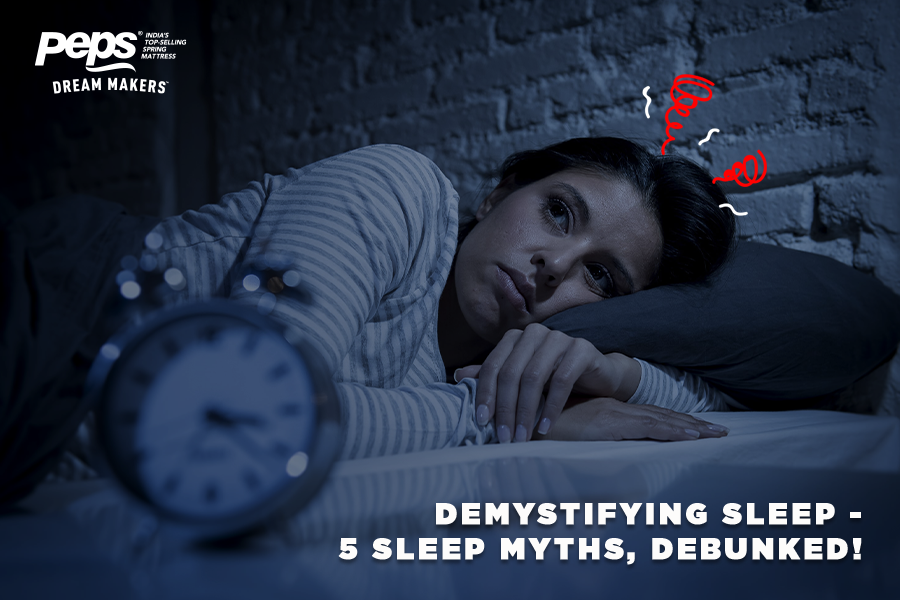
The need for good quality sleep has been well-established today, and people are constantly on the lookout for tips and tricks to ensure that they are sleeping right. However, how many of these tips are actually backed by facts? From conversations with family members to posts on social media – we encounter several sleep myths on a daily basis, that may actually be causing more harm than good. Debunking these sleep myths is therefore necessary to ensure that you fall asleep fast, sleep soundly and wake up fresh.
Myth #1 – Napping during the day can compensate for lack of sleep at night.
When we are finishing up a piece of work or watching “just one more episode”, we often tell ourselves that we can nap during the day to make up for a sleepless night. However, research indicates that the brain moves through several stages during night sleep. Therefore, while a nap may provide a quick boost of energy, it can also make you feel disoriented upon waking up. Moreover, naps may also upset your sleep cycle, an d make it difficult for you to fall asleep at night.
Myth #2 – A warm bedroom is ideal for good quality sleep.
While a warmer bedroom definitely feels cosy, cranking up your room’s temperature may not always be the best idea. The physical process of sleep involves a natural dropping of body temperature. Therefore, a bedroom that is too hot may disrupt that process and interfere with sleep. This can be combated by ensuring that your bedroom is at an optimal temperature, generally considered to be between 65-70 degrees Fahrenheit. Moreover, a mattress with temperature-regulatory properties, such as Peps Double Decker, can help keep your body at an ideal temperature while you sleep.
Myth #3 – Still sleepers are the soundest sleepers.
Worried about moving around in your sleep? While sleeping still is often equated to sleeping soundly, research indicates that minor movements are actually healthy, normal and natural. Movements during sleep are a cause of concern only if they are chronic or violent, cause awakening, or disturb a partner. Using a mattress with pocketed springs, such as Peps Crystal, can ensure that your movements don’t affect your soundly sleeping partner!
Myth #4 – Sleeping on a firm mattress relieves back pain.
People with back-related issues are often advised to opt for a firm mattress to help relieve back pain. However, modern research indicates that a medium or medium-firm mattress may actually be better for back health. The best mattress is one that is firm enough to support your entire body, while being soft enough to contour to your curves and prevent pressure points. For example, Peps Spine-Guard uses revolutionary memory foam to keep your spine aligned properly and eliminate pressure from specific body parts.
Myth #5 – The time of sleep doesn’t matter, as long as you sleep enough.
Studies have demonstrated that it is not just the amount of sleep that matters, but the timing of sleep as well. Sleeping at night is essential to align your circadian rhythm or internal body clock with the external environment. Proper circadian timing is not only important for sleep quality, but also impacts mental health, cardiovascular health, metabolism, and other aspects of mental and physical well-being.
Despite spending over one-third of our lives sleeping, sleep may often still seem like a mystery. While sleep-research is continuously looking for ways to explain the sleep process, it is well-established that sleep can be optimised to improve daily functioning. It’s time to demystify sleep, and replace myths with facts to help you sleep better and wake up refreshed!

